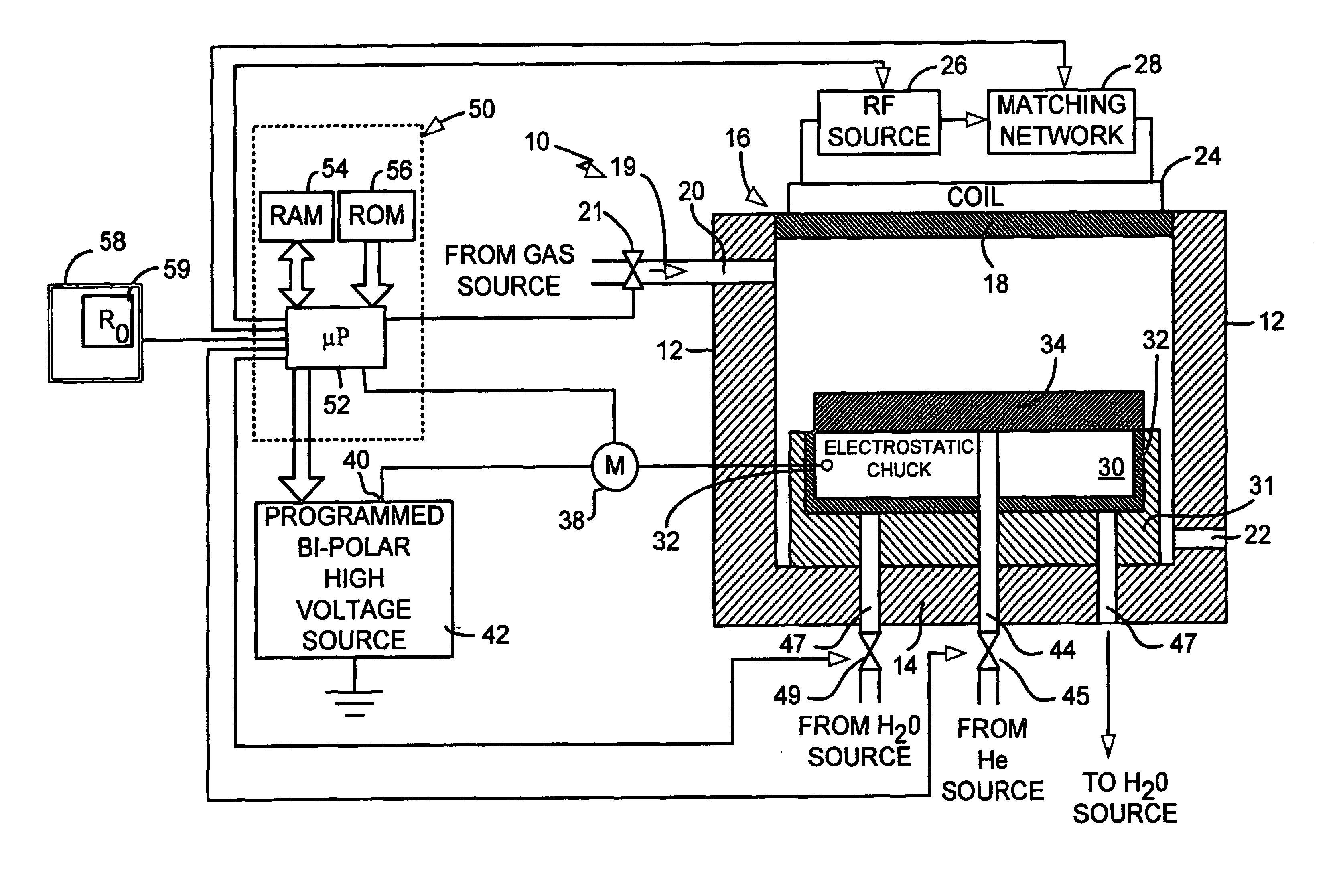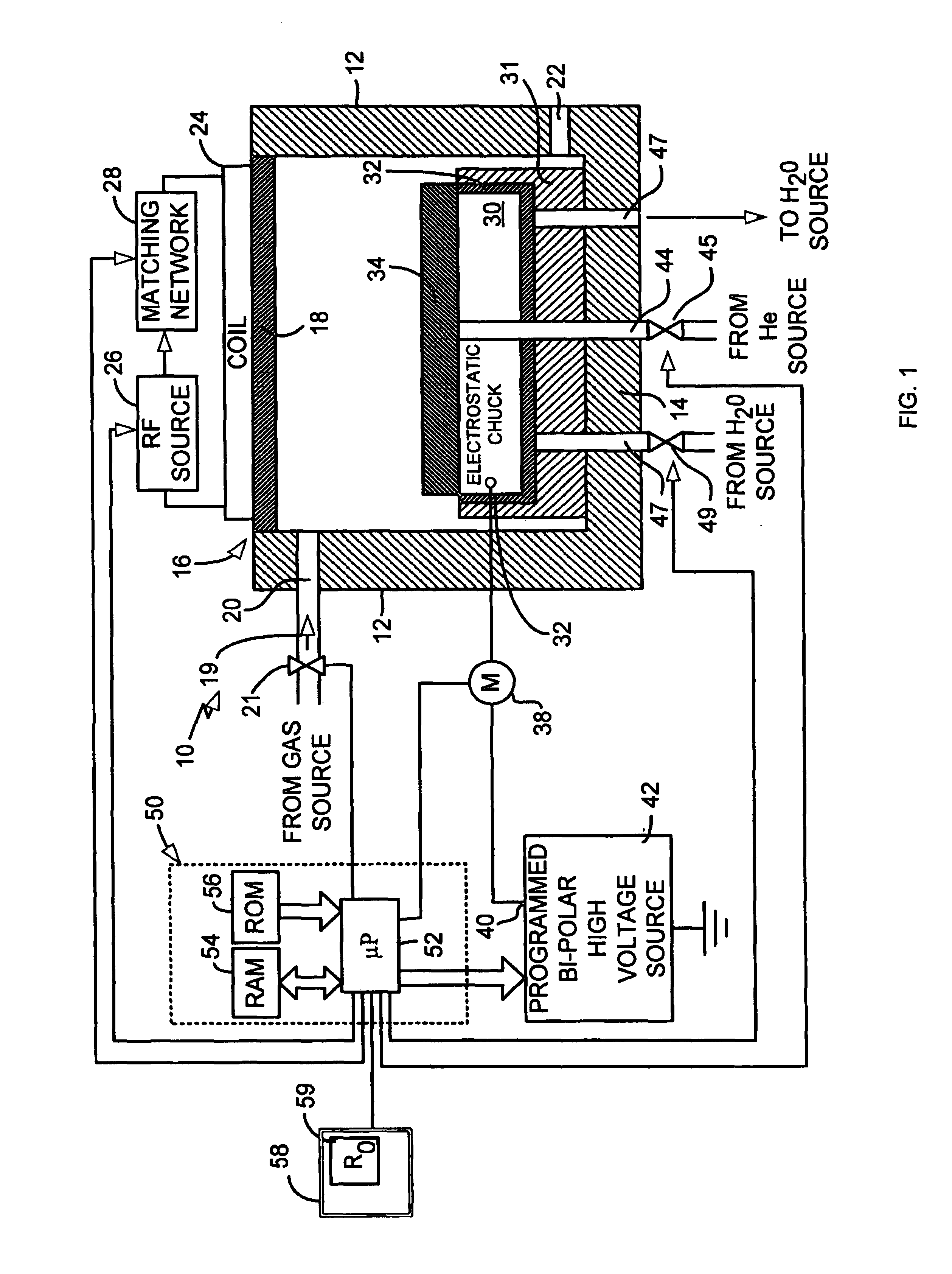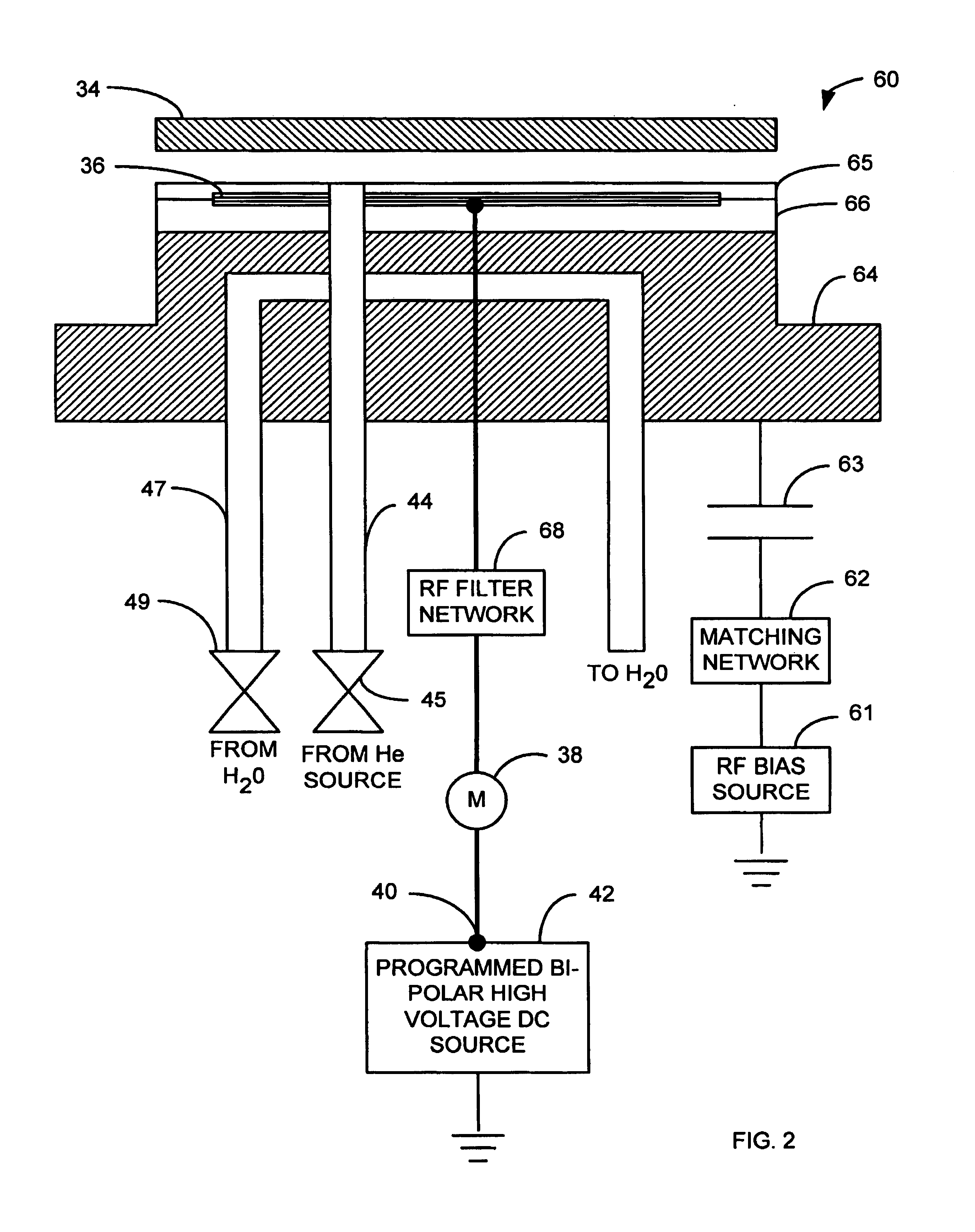System and method for dechucking a workpiece from an electrostatic chuck
a technology of electrostatic chuck and workpiece, which is applied in the direction of electrostatic holding devices, decorative arts, electrical apparatus, etc., can solve the problems of not working, not working, and complicated dechucking process, so as to minimize the current spike, the effect of dechucking parameters and dechucking parameters
- Summary
- Abstract
- Description
- Claims
- Application Information
AI Technical Summary
Benefits of technology
Problems solved by technology
Method used
Image
Examples
Embodiment Construction
[0040]In the following detailed description, reference is made to the accompanying drawings, which form a part of this application. The drawings show, by way of illustration, specific embodiments in which the invention may be practiced. It is to be understood that other embodiments may be utilized and structural changes may be made without departing from the scope of the present invention.
[0041]This invention provides a system and method for determining the dechucking parameters for an electrostatic chuck (ESC). During the dechucking process a reverse polarity voltage is applied for a time period. It shall be appreciated by those skilled in the art that during the dechucking process that if the reverse polarity magnitude is too small or the time period too short, the workpiece will not be sufficiently dechucked and may stick to the ESC. On the other hand, if the reverse polarity magnitude is too high or the time too long, the wafer may be re-clamped with the opposite polarity, and o...
PUM
| Property | Measurement | Unit |
|---|---|---|
| voltage | aaaaa | aaaaa |
| DC voltage | aaaaa | aaaaa |
| voltage | aaaaa | aaaaa |
Abstract
Description
Claims
Application Information
 Login to View More
Login to View More - R&D
- Intellectual Property
- Life Sciences
- Materials
- Tech Scout
- Unparalleled Data Quality
- Higher Quality Content
- 60% Fewer Hallucinations
Browse by: Latest US Patents, China's latest patents, Technical Efficacy Thesaurus, Application Domain, Technology Topic, Popular Technical Reports.
© 2025 PatSnap. All rights reserved.Legal|Privacy policy|Modern Slavery Act Transparency Statement|Sitemap|About US| Contact US: help@patsnap.com



